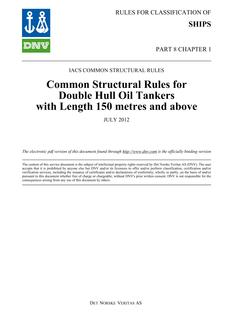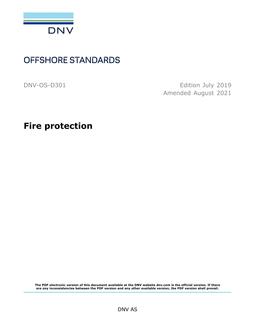-
-
Available Formats
- Availability
- Priced From ( in USD )
-
Available Formats
-
- Secure PDF 🔒
- Immediate download
- $57.00
- Add to Cart
-
- Printed Edition
- Ships in 1-2 business days
- $57.00
- Add to Cart
Customers Who Bought This Also Bought
-

DNV DNV-RU-SHIPS PART 8 CHAPTER 1
Priced From $57.00 -

DNV DNV-OS-D301
Priced From $57.00
About This Item
Full Description
Introduction
The following fatigue cracking failure modes are considered in this document (see also Figure 2-1):
Fatigue crack growth from the weld toe into the base material
In welded structures fatigue cracking from weld toes into the base material is a frequent failure mode. The fatigue crack is initiated at small defects or undercuts at the weld toe where the stress is highest due to the weld notch geometry. A large amount of the content in this classification note is made with the purpose of achieving a reliable design with respect to this failure mode.
Fatigue crack growth from the weld root through the fillet weld
Fatigue cracking from root of fillet welds with a crack growth through the weld is a failure mode that can lead to significant consequences. Use of fillet welds should be avoided in connections where the failure consequences are large due to less reliable NDE of this type of connection compared with a full penetration weld. However, in many welded connections use of fillet welds can hardly be avoided and it is also efficient for fabrication. The specified design procedure in this document is considered to provide reliable connections also for fillet welds.
Fatigue crack growth from the weld root into the section under the weld
Fatigue crack growth from the weld root into the section under the weld is observed during service life of structures and it is observed in laboratory fatigue testing. The number of cycles to failure for this failure mode is of a similar magnitude as fatigue cracking from the weld toe in as welded condition. There is no methodology that can be recommended used to avoid this failure mode except from using alternative types of welds locally. This means that if fatigue life improvement of the weld toe is required the connection will become more highly utilized and it is also required to make improvement for the root. This can be performed using a full penetration weld along some distance of the stiffener nose
Fatigue crack growth from a surface irregularity or notch into the base material
Fatigue cracking in the base material is a failure mode that is of concern in components with high stress cycles. The fatigue cracks often initiate from notches or grooves in the components or from small surface defects/ irregularities. The specified design procedure in this document is considered to provide reliable connections also with respect to this failure mode.
Document History
-
DNV DNVGL-RP-C206
Fatigue methodology of offshore ships- Most Recent
-
DNV DNV-RP-C206
currently
viewing
Fatigue Methodology of Offshore Ships- Historical Version
-
DNV DNV-RP-C206
FATIGUE METHODOLOGY OF OFFSHORE SHIPS- Historical Version
-
DNV DNV-RP-C206
FATIGUE METHODOLOGY OF OFFSHORE SHIPS- Historical Version
-
DNV DNV-RP-C206
FATIGUE METHODOLOGY OF OFFSHORE SHIPS- Historical Version
-
DNV DNV-RP-C206
FATIGUE METHODOLOGY OF OFFSHORE SHIPS- Historical Version



